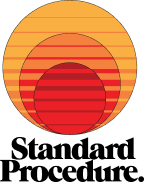Mineral vs Chemical Sunscreen
Sunscreens are some of the more scrutinised products in the world, and rightfully so.
To say they play a crucial role is an understatement, but with many theories and misinformation floating around, it can be tricky to navigate the facts.
As you may have noticed, Sunscreen tends to be divided into two categories:
1. Physical/Mineral Sunscreens - scientifically known as inorganic sunscreen.
2. Chemical sunscreen - scientifically known as organic sunscreen
…that wasn’t a typo. We know, this already is counterintuitive to the picture that's been painted.
'Mineral' sunscreens, commonly perceived as natural, contain the elements titanium and zinc (Both of which are technically classified as chemicals). Titanium dioxide and zinc oxide typically undergo treatment to eliminate toxic contaminants and are often coated with synthetic chemicals to inhibit photocatalytic activity and prevent clumping, ensuring even protection. Although marketed as ‘mineral,’ many modern mineral sunscreen formulas may also include chemical filters to achieve higher SPF ratings, reduce white cast and achieve new lighter textures but these chemical filters might not always be listed as active ingredients. Then, despite its negative connotations, the term ‘chemical’ in the context of sunscreen refers to ‘organic’ compounds, with all UV filters except titanium dioxide and zinc oxide falling into this category.
On top of this, both Mineral and Physical Sunscreens are actually very similar in the way they perform too. Despite common assumptions that inorganic sunscreens primarily reflect UV rays and organic sunscreens absorb them to convert into heat, both types actually function in remarkably similar ways across most of the UV spectrum, predominantly absorbing UV light and converting it to a negligible amount of heat.
All this to say, theres a lot of confusion around the actual differences between mineral and chemical sunscreens. However, one clear fact is that Sunscreen is one of the most regulated products in the world. The ingredients and efficacy of sunscreen are subject to stringent regulations and compliance measures, particularly in Australia and Europe, to ensure both our safety and that of our environment.
From our perspective, the best sunscreen out there is the one you’ll actually enjoy wearing that effectively protects you. To ensure its effectiveness, you need to make sure your sunscreen has passed the most stringent testing regulations and adheres to its claims. You have to enjoy wearing it everyday and at the dosage required, which is often where the biggest and most dangerous mistakes with sun protection occur.
When discussing safety in Sunscreen, it’s important to keep a couple of things in mind:
- Purchasing Sunscreen that you need to use scarcely defeats the purpose. You need to generously apply ½ teaspoon/2.5ml of Sunscreen just for your face, neck and ears every 2 hours for it to be effective.
- Innovative formulations with SPF are entering the market rapidly like powder, blush, highlighter etc with SPF and while these are great bonuses on top of your already applied Sunscreen (after you let it sink in for 15 mins), it’s important to remember if you’re using the products alone then the same dosage rules apply which is often impossible to achieve with makeup or aerosols. The notion of ‘something is better than nothing’ doesn’t fly.
- Ultraviolet Radiation (UV) is a complete carcinogen, meaning it’s both a mutagen and a damaging agent that acts as both a tumor initiator and promoter. Regular exposure without protection drastically increases the risk of skin cancer. 2 in 3 Australians and 1 in 5 Americans will develop Skin Cancer by the age of 70. 90% of non-melanoma skin cancers and 86% of melanomas are associated with exposure to UV radiation from the sun.
- The effectiveness of sunscreen isn’t solely about its protective level—it’s also about how well it suits individual needs. In developing Standard Procedure, we consulted a wide range of users, from athletes who struggle with constantly rubbing off sweat and/or water from their faces that they felt took the mineral sunscreen off too, stinging eyes or skin that was left feeling sticky/slippery. Parents expressed the same for their children, beauty-conscious consumers we found to prefer chemical filters for better compatibility with makeup and to avoid clogged pores from heavier formulas. Personal preference is key, which is why we initially launched our chemical filter-based SPF 50+ Sunscreen.
Our SPF 50+ Sunscreen is compliant with Hawaii Act 104, Clean@Sephora (with glowing reviews), is Australian Made, certified by the TGA, registered in Europe (Europe and Australia are known for their strict health and safety standards for sunscreen ingredients and testing) and monitored by our expert regulations partners, Biorius. We look forward to expanding our range to accommodate a broader array of preferences soon.
Whether you prefer a chemical (organic), mineral (inorganic) or a hybrid formulation - find one you love, check it adheres to the highest SPF standards and make it a Standard Procedure in your routine.
Disclaimer: Always read the label. Follow the directions for use. Always patch test before use and keep out of reach of children. Sunscreen is only one part of sun protection so wear protective clothing and seek shade. Avoid prolonged sun exposure. Reapply every 2 hours and after swimming, towelling and perspiring in accordance with directions.
1.https://www.tandfonline.com/doi/full/10.1088/1468-6996/14/2/023001
2.https://insideclimatenews.org/news/27112023/dereliction-of-beauty-part-two/
3.https://pubmed.ncbi.nlm.nih.gov/30850037/


